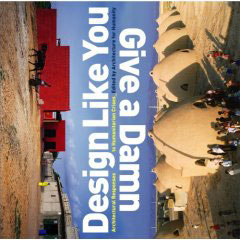Säkrare på Jamarat Bridge
 Under den muslimska högtiden Hajj reser miljontals muslimer till Mecca i Saudiarabien. Vid ett av pilgrimsresans etappmål skall alla firande ta sig upp på Jamarat Bridge, som egentligen är alldeles för smal (se mer här) för att hantera de stora mängderna människor. 1997 och 1998 dog människor och 2004 trampades 251 pilgrimmer till döds i en tragisk olycka när panik uppstod i folkmassan.
Under den muslimska högtiden Hajj reser miljontals muslimer till Mecca i Saudiarabien. Vid ett av pilgrimsresans etappmål skall alla firande ta sig upp på Jamarat Bridge, som egentligen är alldeles för smal (se mer här) för att hantera de stora mängderna människor. 1997 och 1998 dog människor och 2004 trampades 251 pilgrimmer till döds i en tragisk olycka när panik uppstod i folkmassan. I år däremot, skriver Wired Science, deltog 3,8 miljoner pilgrimmer och ingen dog. Varför? Därför att man konsulterat matematiker som räknat ut optimala förändringar för att hantera massrörelserna.
I år däremot, skriver Wired Science, deltog 3,8 miljoner pilgrimmer och ingen dog. Varför? Därför att man konsulterat matematiker som räknat ut optimala förändringar för att hantera massrörelserna.
 Wiredartikeln citerar ur boken Engineering for Crowd Safety:
Wiredartikeln citerar ur boken Engineering for Crowd Safety:“At occupancies of about 7 persons per square meter the crowd becomes almost a fluid mass. Shock waves can be propagated through the mass, sufficient to...propel them distances of 3 meters or more....People may be literally lifted out of their shoes, and have clothing torn off. Intense crowd pressures, exacerbated by anxiety, make it difficult to breathe, which may finally cause compressive asphyxia. The heat and the thermal insulation of surrounding bodies cause some to be weakened and faint. Access to those who fall is impossible. Removal of those in distress can only be accomplished by lifting them up and passing them overhead to the exterior of the crowd.”

 Wired Science skriver:
Wired Science skriver:"The Saudi government implemented some crowd control recommendations from Dirk Helbing and Anders Johansson at the Dresden University Institute of Technology. Helbing and Anders looked at surveillance imagery from the 2006 trampling incident as if every person was a particle in fluid-dynamical flow. The stampedes, they reasoned, happen when laminar flow—smooth—transitions to stop-and-go and turbulent. [...] Helbing's group found that if the number of people passing a given spot in a given amount of time falls too low, the transition to turbulence was about a half hour away. They suggested to the Saudis—who followed up—that they change the shape of the Jamarat Bridge and its approaches, institute automated counting to head off the turbulence transition, and make a few alterations in the schedule of the Hajj."Design när den är som mest intelligent.
 [Bilder från Flickr]
[Bilder från Flickr]Andra bloggar om: arkitektur, Hajj, Jamarat Bridge, Mecca
Etiketter: arkitektur, utomlands










0 kommentarer:
Skicka en kommentar
Hem